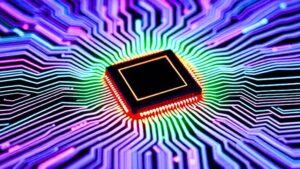The rollout of 5G technology promises to revolutionize various aspects of industry and society by providing faster internet speeds, lower latency, and enhanced connectivity. This article explores the fundamental aspects of 5G technology, its applications across different sectors, the benefits it brings, and the challenges that need to be addressed for its widespread adoption.
Understanding 5G Technology
What is 5G?
5G, or fifth-generation wireless technology, is the latest standard for mobile networks. It is designed to significantly enhance the speed and responsiveness of wireless networks. Compared to its predecessor, 4G LTE, 5G offers higher data rates, reduced latency, and the capacity to connect a massive number of devices simultaneously.
Key Features of 5G
- Enhanced Mobile Broadband (eMBB): Provides significantly faster data speeds, enabling high-definition video streaming, virtual reality (VR), and augmented reality (AR) applications.
- Ultra-Reliable Low Latency Communications (URLLC): Ensures extremely low latency, making it suitable for applications that require real-time communication, such as autonomous vehicles and remote surgery.
- Massive Machine-Type Communications (mMTC): Supports a vast number of connected devices, facilitating the growth of the Internet of Things (IoT) in smart cities, industrial automation, and more.
Applications of 5G Technology
1. Healthcare
- Remote Surgery: With URLLC, surgeons can perform operations remotely with real-time precision, breaking geographical barriers and improving access to specialized medical care.
- Telemedicine: Enhanced video quality and low latency facilitate virtual consultations and remote monitoring of patients, especially in rural or underserved areas.
- Wearable Devices: 5G-enabled wearables can continuously monitor vital signs and transmit data to healthcare providers for proactive management of health conditions.
2. Manufacturing and Industry
- Smart Factories: 5G supports the automation of manufacturing processes, enabling real-time monitoring and control of equipment, predictive maintenance, and efficient production workflows.
- Industrial IoT: A vast network of connected sensors and devices can optimize operations, reduce downtime, and enhance safety in industrial environments.
- Augmented Reality (AR) and Virtual Reality (VR): AR and VR applications for training, maintenance, and design can be enhanced by 5G’s high data rates and low latency.
3. Transportation
- Autonomous Vehicles: 5G enables the real-time communication between autonomous vehicles and infrastructure, improving navigation, safety, and traffic management.
- Smart Traffic Management: Connected traffic lights, sensors, and cameras can optimize traffic flow, reduce congestion, and enhance road safety.
- Drones and Delivery Services: 5G supports the operation of drones for delivery services, surveillance, and inspection, providing real-time data transmission and control.
4. Entertainment and Media
- High-Quality Streaming: 5G allows for seamless streaming of high-definition and 4K video content, enhancing the user experience for entertainment and media consumption.
- Cloud Gaming: Low latency and high-speed connectivity enable cloud gaming services, allowing users to play high-performance games on any device without the need for powerful hardware.
- Virtual Reality (VR) and Augmented Reality (AR): Immersive experiences in VR and AR are made more responsive and interactive with 5G’s capabilities.
5. Smart Cities
- Public Safety: 5G supports advanced surveillance systems, emergency response, and disaster management, enhancing public safety and security.
- Energy Management: Smart grids and energy management systems can optimize energy distribution and consumption, reducing waste and promoting sustainability.
- Infrastructure Monitoring: Connected sensors can monitor the condition of infrastructure such as bridges, roads, and buildings, enabling predictive maintenance and timely repairs.
Benefits of 5G Technology
Increased Speed and Capacity
5G provides data transfer speeds up to 100 times faster than 4G, enabling quick downloads and seamless streaming. Its increased capacity supports a higher density of connected devices, essential for IoT applications.
Reduced Latency
With latency as low as 1 millisecond, 5G enables real-time communication and interaction, which is critical for applications like autonomous vehicles, remote surgery, and online gaming.
Enhanced Connectivity
5G’s ability to connect a vast number of devices simultaneously without congestion paves the way for the proliferation of smart devices and the IoT, leading to smarter homes, cities, and industries.
Economic Growth
The deployment of 5G is expected to drive significant economic growth by enabling new business models, improving productivity, and fostering innovation across various sectors.
Challenges and Considerations
Infrastructure Investment
Deploying 5G requires significant investment in infrastructure, including the installation of numerous small cells, upgrading existing towers, and expanding fiber optic networks.
Spectrum Availability
5G operates on a variety of frequency bands, including low, mid, and high bands. Ensuring the availability of sufficient spectrum and managing its allocation is crucial for the effective deployment of 5G networks.
Security Concerns
As 5G connects more devices and systems, it also increases the potential attack surface for cyber threats. Robust security measures and protocols are essential to protect data and ensure network integrity.
Health and Environmental Impact
There are ongoing debates about the potential health effects of exposure to higher frequency electromagnetic fields used in 5G. Further research and adherence to safety guidelines are necessary to address public concerns.
Regulatory and Policy Challenges
Governments and regulatory bodies need to establish clear policies and regulations to facilitate the deployment of 5G while addressing issues related to competition, privacy, and national security.
The impact of 5G technology on industry and society is profound, offering numerous benefits from enhanced connectivity and speed to the enablement of new applications and business models. While challenges exist, the potential for economic growth, innovation, and improved quality of life makes 5G a transformative force in the digital age. As 5G networks continue to expand and mature, the world will witness unprecedented advancements that will shape the future of technology and society.







